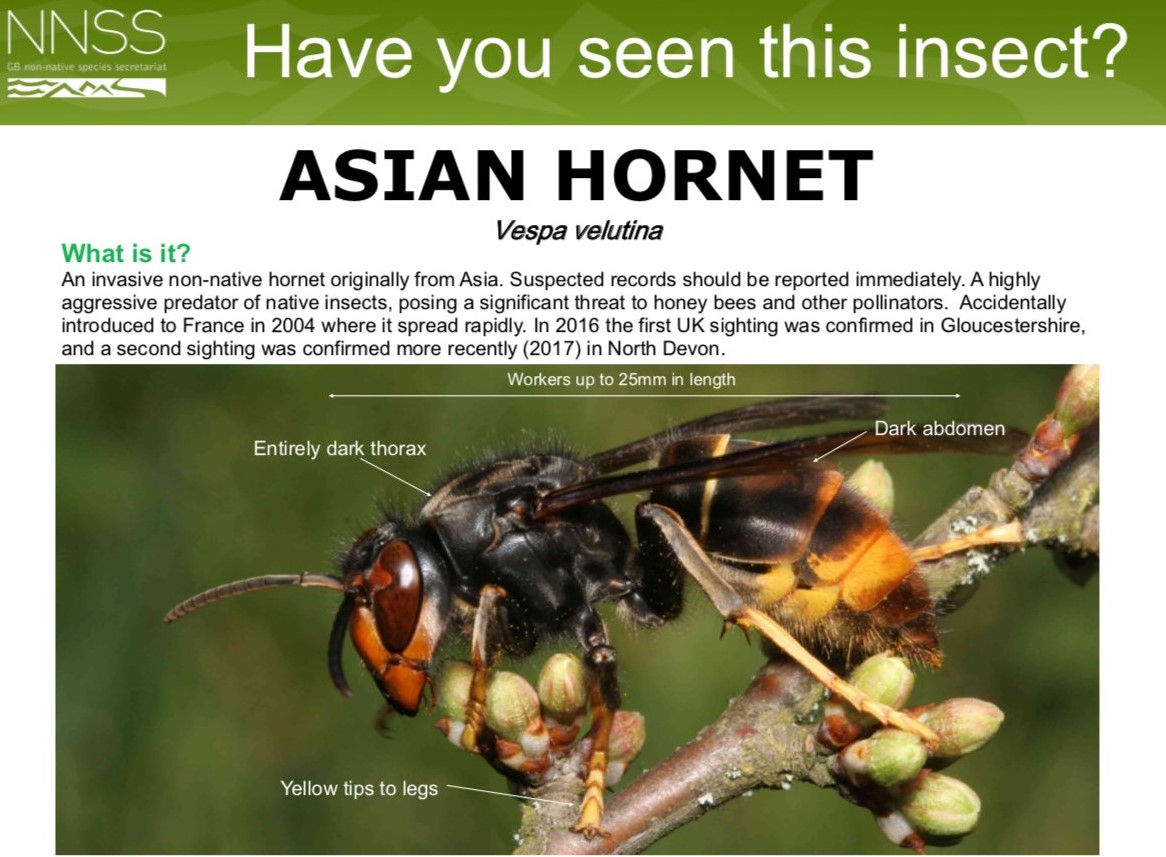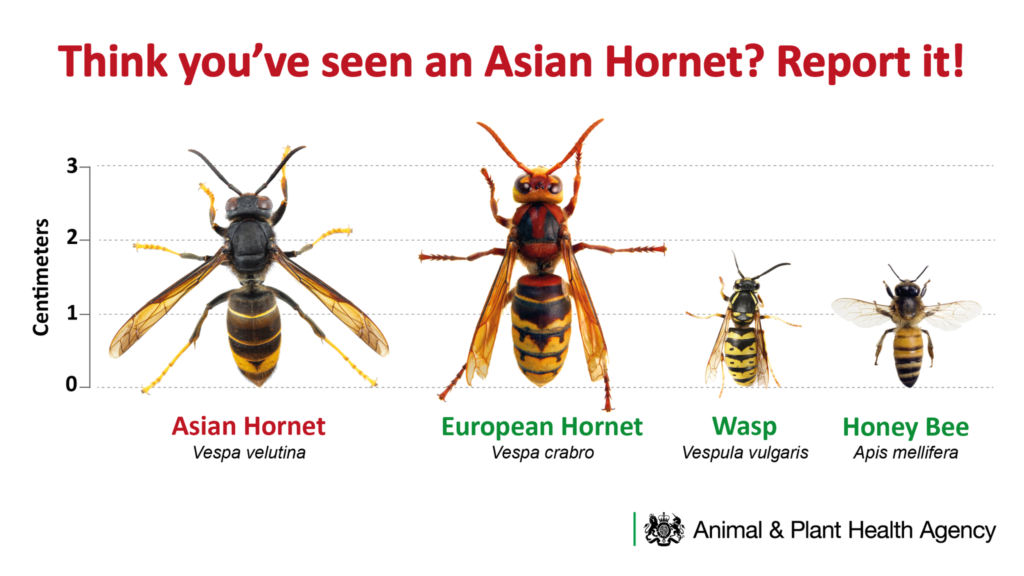
“Asian hornets are a non-native invasive predator of medium to large insects. They pose a serious threat to our native pollinators and, throughout the summer, honey bees can make up a substantial part of their diet as they build their nests up to several thousand individuals.”
Animal and Plant Health Agency, DEFRA, UK GOV
The Asian hornet preys on a wide range of insects and pollinators, including honeybees, and disrupts the ecological role they provide in respect of fruit production. It has also altered the biodiversity in regions of France where it is present and demonstrates aggressive behaviour with a painful sting which can be a severe health risk to those who have allergies to hornet or wasp stings.
Asian Hornet Trap |
Asian Hornet Documentary |
Asian Hornet Nest |
Identifying Asian Hornets |
Vespa velutina, sometimes known as the ‘Asian hornet’ is an invasive non-native species from Asia. If you find one you must report it. It arrived in France in 2004 and has spread rapidly. As a highly effective predator of insects, including honey bees and other beneficial species, it can cause significant losses to bee colonies, other native species and potentially ecosystems.
Vespa velutina, the yellow legged hornet, commonly known as the Asian hornet, is native to Asia and is thought to have been imported in a consignment of pottery from China. The hornet preys on honeybees, Apis mellifera and disrupts the ecological role which it provides and damages commercial beekeeping activities. It has also altered the biodiversity in regions of France where it is present.
Crown Copyright – www.nationalbeeunit.com
Asian Hornet Look-Alikes (these are NOT Asian Hornets)


What to look out for
- Vespa velutina queens are up to 30 mm in length; workers up to 25 mm (slightly smaller than the native European hornet Vespa crabro)
- Mostly black body except for its 4th abdominal segment which is a yellow band located towards the rear
- It has characteristic yellow legs which accounts for why it is often called the yellow-legged hornet
- Its face is orange with two brownish-red compound eyes
- Vespa velutina is a day-flying species that, unlike the European hornet, ceases activity at dusk
What do you do if you find an Asian hornet?
1. Please use the Asian Hornet Watch app on your phone to send a picture and a location via GPS in the app straight to the non-native species secretariat and National Bee Unit.
2. If you cannot download the Asian Hornet Watch app, please use this online recording form 3. As a last resort, you send a picture and email with details of where you saw the Asian hornet with your contact details to
If it is safe to do so, you can send in a sample to the National Bee Unit for examination to confirm identity (please note the specimen must be dead before sending it in). However, do not under any circumstances disturb or provoke an active hornet’s nest. For more information visit the Non-Native Species Secretariat website.
Map of UK Sightings (not maintained by Barnsley BKA)
Useful resources:
- Alert poster English (PDF) | Welsh (PDF)
- ID sheet: English (PDF) | Welsh (PDF)
- Awareness and ID booklet (PDF)
- BBKA- Help the Fight Against the Asian Hornet- Invasion Document Aug 23
Further information on Asian hornet :
Barnsley Asian Hornet Action Team (AHAT)
Ivor is our local AHAT coordinator. In the event of a suspected sighting in Barnsley, he will coordinate a team that has passed training on identifying and tracking Asian Hornets.
Asian Hornet Coordinator: email (if you believe you have seen an Asian Hornet you should follow the reporting procedures, not contact Ivor)
